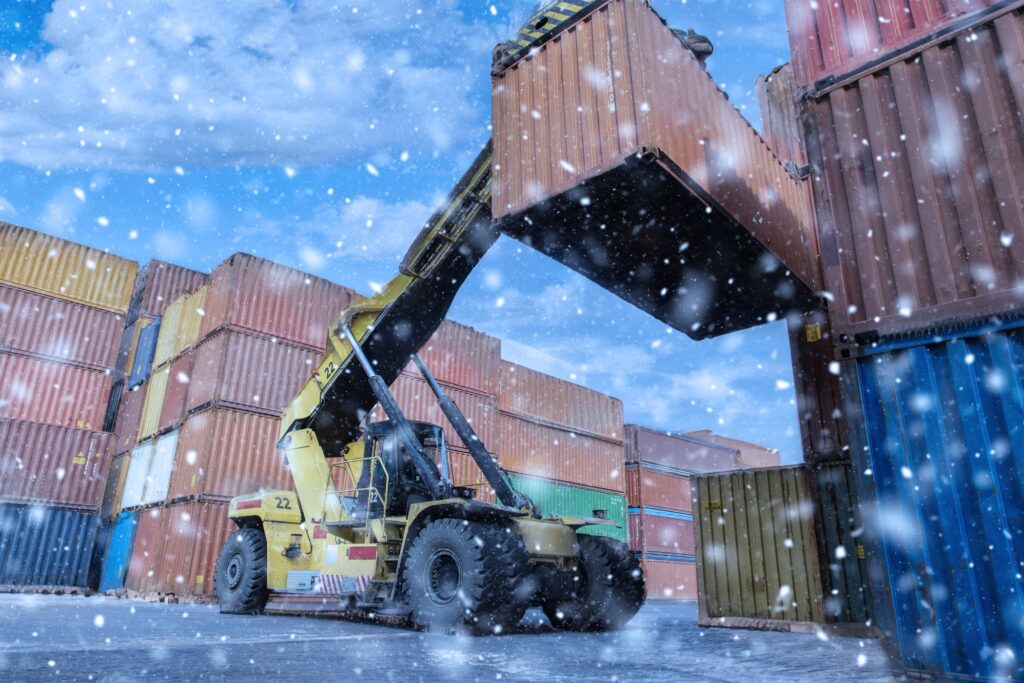Just when your supply chain operations are humming like a well-oiled machine, a risk event throws a proverbial wrench into the works. In the worst case, production or deliveries come to a grinding halt. This causes supply chain disruption, a breakdown in the manufacture and flow of goods to customers.
Disruption in today’s complex supply networks is rarely so straightforward as the “broken link in a chain” analogy from the past. You might think of supply networks more like cogs in a machine. So, a problem in one area can make everything stop at once.
Responding immediately to adverse events is key to managing supply chain disruptions effectively.
Here are four steps to take:
- Quickly assess critical events.
- Identify any risks related to the delivery of goods.
- Evaluate the viability of suppliers.
- Secure the supply and ensure you can meet customer commitments.
Enterprises are realizing that it is not enough to optimize the cost of supply chain operations. No matter how finely tuned a machine is, disruption is likely to happen sooner or later. Being ready for risk events reduces the time needed for the response, as well as the cost of it.
Six Causes of Supply Chain Disruption
What are some potential types of supply chain disruption? In some cases, disruption is an internal company matter, such as product recalls or changes in management. Other systemic threats come from external factors such as power outages, border closures or natural hazards.
Supply chains are commonly vulnerable to these six risk categories:
- Cyber (threats include ransomware, data theft)
- Financial (for example, force majeure, revenue outlook)
- Geopolitical (such as civil unrest, tariff hikes)
- Man-made (including fires, explosions)
- Natural hazard (extreme weather, earthquakes, hurricanes, etc.)
- Reputation and compliance (such as conflict of interest, sustainable procurement)
Of course, many threats are not so neatly categorized. Issues such as Brexit, raw material shortages and environmental concerns encompass more than one risk category. Sudden, unplanned spikes in demand can also cause supply chain disruption. Not being able to provide goods fast enough is particularly disturbing for companies.
Examples and Impact of Supply Chain Disruption
The demand for certain goods that skyrocketed during the coronavirus pandemic provided countless examples of supply chain disruption, along with their consequences. Where demand for personal protective equipment outpaced supply, hospitals outbid each other.
The public fought for canned goods and, of course, toilet paper. Similarly, through lockdowns and restrictions, demand for certain goods plummeted – restaurant meals or automobiles, for example. A sudden drop in demand can lead to a breakdown in manufacturing cycles.
The cost of supply chain disruption includes loss of revenue when products do not reach customers on schedule. However, interruption of supply chains leads to a range of other costs. For example, when parts are unavailable, productivity is lost as workers sit idle.
However, the search for and onboarding of alternative suppliers is costly. Further effects of supply chain disruption include damaged reputation, which nudges customers to turn to the competition.
Three Ways to Manage Disruption in the Supply Chain
In most cases, the faster companies react to events, the better they can manage or avoid disruption. This is where artificial-intelligence-based software comes in. When companies monitor suppliers and supply paths, weather forecasts, financial indicators and trade union activity, they learn of threats before calamity strikes. Additionally, by developing risk-aware strategies, companies can reduce the severity of disruption and make their supply chains more resilient:
1. Be aware of different kinds of risk and have proactive contingency plans.
This can make enterprises flexible enough to quickly adjust operations when faced with irregularities. Even business continuity plans address emergencies only after they have occurred. Be aware of threats and plan for risk, so you are ready should an adverse event affect key suppliers.
2. Develop supply chain disruption strategies.
Efforts to improve supply chain cost efficiency often are at loggerheads to risk management. Procurement professionals need to ensure cost efficiency. However, emergency expenditures tend to be many times higher than investing in supply chain risk management. So one way to protect savings gains is by avoiding loss from being unprepared for future risk events.
Factoring in the cost of risk can lead to more secure sourcing decisions. Also, collaborating with business partners to foster a reliable supply network is essential. Finally, procurement could discern whether suppliers or customer demand swing are driving disruption.
3. Learn how to avoid supply chain disruption
in the first place.
Identifying threats or risk is just the first step. Effective supply chain risk management uncovers vulnerabilities both inside and outside the organization by:
- Gaining sub-tier visibility into the supply network.
- Diversifying the supply chain where possible.
- Actively monitoring new and emerging threats in all risk categories.
Having predictive insight through robust supply chain risk management helps enterprises mitigate the consequences and cost of disruptions. Or businesses can react faster when events strike, keeping them one step ahead of the competition. Companies that are prepared for risk can repair their supply networks faster. Even better, they might be able to avoid disruption in the first place and keep operations running like clockwork.
*riskmethods was acquired by Sphera in October 2022. This content originally appeared on the riskmethods website and was slightly modified for sphera.com.






